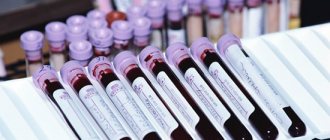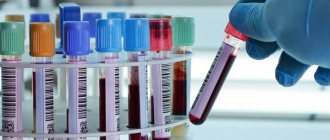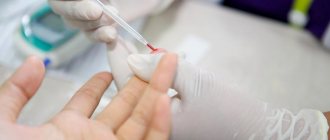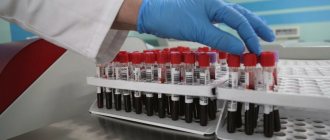| How to replace fluorography | Description |
| Analog and digital x-ray | X-ray of the lungs, both analog and digital, are considered good information-rich options to replace fluorography. Their essence is to scan the organ under study using X-rays. In the analog version, the examination results are realized on film; in the digital version, they are displayed on a computer screen; they can be recorded on a disk, removable media, or displayed on hard x-ray film. |
| Ultrasound examination (ultrasound) | It is a partial replacement for fluorography. Ultrasound is not such an informative method of examination, particularly if there is a suspicion of pneumonia or tuberculosis. They resort to such an analogue extremely rarely. |
| Biochemical blood tests or PCR | In case of pregnancy or a strong reaction to manta, instead of fluorography, biochemical blood tests (for example, if pneumonia is suspected) or PCR from the pharynx, blood tests for mycoplasma, pneumococci may be prescribed. In addition to the tests, the patient must undergo instrumental examination such as listening with a phonendoscope and auscultation. |
Fluorography is the most common way to examine the lungs to detect serious pathologies. It is based on the use of x-ray radiation, which is not the safest for health.
During pregnancy, the expectant mother has concerns, and she wonders how to replace fluorography, since such a study can harm not only her health, but also the baby.
Is it possible for pregnant women to have fluorography - doctors’ opinion
X-ray examination allows you to see various diseases of the respiratory tract and cardiovascular system. During the procedure, X-rays pass through the body, while cells and tissues absorb and reflect them. The result of the study is a picture that allows the doctor to assess the patient’s condition and make the correct diagnosis.
Regardless of the field of study, during fluorography a person is exposed to radioactive radiation. This is what expectant mothers fear, and with good reason. For a healthy person, x-rays are recommended no more than once a year. This study, like any other x-ray, is contraindicated for pregnant women, because radiation, unfortunately, has the most powerful effect on growing (developing and dividing) cells. It is believed that fluorography causes the greatest harm in the first half of pregnancy, that is, in the early stages and up to 21 weeks .
Nevertheless, fluorography can be performed on the expectant mother, but only as a last resort, when the threat to her life and health from a possible disease is much more significant than the harm from the radiation received during the study.
Most doctors agree: even minimal danger to the normal development of the baby is best avoided. Each case is considered individually. It is impossible to predict in advance whether harm will occur to a growing child. Therefore, the doctor takes into account the peculiarities of the course of pregnancy, possible risks, and the general condition of the expectant mother. Only after this the question of the possibility or refusal of an X-ray examination is decided.
As such, no studies have been conducted on fluorography during pregnancy, so it is difficult to say unequivocally about the harm fluorography can cause. In any case, it is better not to prescribe it during pregnancy unless absolutely necessary.
Alevtina Georgievna Nikitina, obstetrician-gynecologist
https://www.happy-giraffe.ru/community/2/forum/post/25343/
Fluorography when planning pregnancy
Fluorography plays an important role when planning pregnancy, as it is a fairly common diagnostic test. It should be done in advance, since this way it will be possible to avoid the possibility of serious diseases of the cardiovascular and respiratory systems. The procedure can be done in just a few minutes. This time is necessary for the X-ray tube to send a beam of rays through the back. After this, the rays leave an imprint on a special film, which will be used for further diagnostics.
For any disease, the time to start treatment is very important, because in this case it will be possible to avoid serious consequences. Doctors are strongly advised not to do fluorography for a long period of time. It can be done once a year. In this case, the body receives a minimum dose of radiation, which cannot negatively affect the person’s health.
Note that the effects of radiation from one x-ray are equal to the dose that a person receives from nature within ten days.
Replacement options during pregnancy
Instead of fluorography, a woman expecting a baby is prescribed other research methods, depending on the probable diagnosis . So, if pneumonia is suspected, biochemical tests are carried out, for example, a blood test for mycoplasma and pneumococci, and PCR is also done, that is, a smear taken from the patient’s pharynx is checked. And of course, first of all, the usual instrumental methods are used - listening with a phonendoscope and auscultation (so-called tapping).
Ultrasound of the lungs can be a partial replacement for fluorography. But it is prescribed extremely rarely: ultrasound is an uninformative method of examination when it comes to suspected pneumonia or tuberculosis.
If necessary, the doctor may also decide to replace the fluorographic examination with a chest x-ray, since this is the most accurate diagnostic method. Whether x-rays of the lungs will be safer for the body cannot be answered unequivocally . The radiation dose depends on several factors:
- “age” and quality of the device used;
- film or digital research method;
- required number of pictures.
Indications and contraindications
Pregnant women undergo fluorography only for vital reasons, for timely diagnosis of such serious diseases as:
- pneumonia;
- tuberculosis;
- tumor growths in the lungs;
- foreign bodies entering the lungs;
- heart pathologies.
Other, additional indications for x-ray examination during pregnancy are associated with suspected tuberculosis:
- positive Mantoux reaction among relatives or people from the immediate environment;
- direct contact with a patient with tuberculosis;
- visiting regions where there are outbreaks of tuberculosis.
General contraindications to x-ray procedures, in addition to the fact of pregnancy, are:
- severe general condition of the patient;
- the patient has pneumothorax or severe bleeding;
- any condition in which a woman cannot remain still.
Possible consequences for the child in the early and late stages
In the first weeks of pregnancy, active formation of the baby's organs occurs. Cells divide, the child grows quickly. Since fluorography affects specifically cellular tissue, it cannot be done in the early stages of pregnancy. Fluorographic examination while waiting for a child can cause serious pathologies:
- Miscarriage. X-rays affect the implantation of the fertilized egg. In the early stages, the fetus is not firmly fixed in the uterine cavity, and under the influence of radiation it may be rejected.
- Pathologies of child development. The baby's cells that have received a dose of radiation cannot form normal organs. Some mutate or die. As a result, various pathologies develop, including intrauterine death.
- Oncological diseases. Blood and lymph are especially susceptible to the harmful effects of X-rays. Examination in the first weeks of pregnancy significantly increases the risk of oncology of the child’s circulatory and lymphatic systems.
Often in gynecological practice a situation arises when a woman undergoes fluorography without yet knowing that she is pregnant. What to do in this case? The expectant mother is given a referral to see a geneticist. The doctor conducts a survey, identifies family history and calculates the percentage of the likelihood of genetic abnormalities. In addition, a geneticist can recommend additional tests and procedures that will help clarify the risk of developmental pathologies in a child. In the future, the necessary information about how the baby develops is provided by a screening ultrasound examination of a pregnant woman, which analyzes the anatomical structures of the fetus.
During the period from the first days to 20 weeks, any x-ray examination of a pregnant woman can be prescribed only for health reasons and under the strict supervision of a doctor.
By the 21st week of pregnancy, the baby completes the development of all internal organs. After this period, fluorography is considered less dangerous, but the likelihood of disturbances in fetal development remains . Therefore, doctors recommend refraining from examinations throughout the entire pregnancy.
Decoding the results
The denser the tissue in the human body, the whiter it appears on a fluorogram. In the image, the bone appears white, and the dense heart appears as a light spot. Lungs filled with air appear darker. Analysis of these shadows will show the doctor what the condition of the internal organs is and will help to find out the reasons for the patient’s possible poor health or ailments.
To make a diagnosis, the physician evaluates:
- state of the pulmonary pattern;
- roots of the lung;
- pleural sinuses;
- mediastinal shadows.
| Description of symptoms | Possible diseases |
| Increased content of connective tissue |
|
| Thickening of the walls of the bronchi or blood vessels |
|
| Rounded shadows with fluid in the pleural cavity and pleural sinuses |
|
| Local compactions in the lungs |
|
| Enhanced pulmonary pattern |
|
| Presence of fibrous tissue in the lung |
|
| Focal shadows |
|
| Calcifications | isolated infection, not dangerous to health. |
However, not all diseases can be seen on film. The doctor, analyzing the image, can notice pneumonia without waiting for the focal shadow caused by the disease to be visible to the naked eye.
Poor fluorography does not mean the presence of a serious illness. Considering the characteristics of the film and the high percentage of defects, the doctor may prescribe additional tests and studies to exclude or confirm the diagnosis.
The picture shows lung cancer
Which is safer: digital or film method?
Standard fluorography is a long-standing method of detecting diseases. During such a study, a person receives a significant dose of radiation. In many countries, this diagnostic method is considered outdated and is not used. Modern doctors recommend using a more modern method - digital fluorography, in which the radiation dose to the body is less. With its help, pathologies of various organs are also identified. It makes it possible to obtain a more accurate picture, make a diagnosis faster and, if necessary, begin timely treatment.
When calculating the safe percentage of radiation, the concept of “Annual effective dose” is used. This is the maximum possible level of exposure to radioactive rays on the human body during the year. Exceeding these indicators has a negative impact on human health.
Table: radiation doses received by various examination methods
| Type of study | Dose of radiation received | Percentage of annual effective dose |
| Film fluorography of the lungs | 0.5–0.8 mSv | 50–80% |
| Digital fluorography of the lungs | 0.05 mSv | 5% |
If the doctor prescribed you an X-ray of the lungs instead of fluorography, you should also give preference to digital rather than film radiography.
Digital fluorography and radiography are the safest and at the same time informative methods for diagnosing diseases of the bronchopulmonary system . The difference between fluorography and x-ray examination of the lungs is the different dose of radiation received by the body and the quality of the result. X-ray is more accurate.
The quality of the image, and, accordingly, the accuracy of the diagnosis made from it, depends on the quality of the X-ray machine, as well as the static (immobility) of the patient during the procedure.
How long does it take to do it and how long does it take to wait for fluorography results?
The result of fluorography is the doctor’s conclusion made based on the data obtained. It usually looks like a brief certificate certifying that the patient (full name) has no identified pathologies, or has certain deviations from the norm.
Photo1. An FLG image, on the basis of which the doctor issues a conclusion on the detection of pathologies.
Many people are wondering how long it will take to wait for a medical report, when will it be ready?
Reference! When undergoing an examination at a public clinic at your place of residence, images can be obtained the next day during pick-up hours.
There are several reasons for such a long wait:
- outdated equipment, often used in public medical institutions;
- large flow of patients;
- The radiologist's working time is strictly limited.
Reference! And even if the patient was examined in the first half of the day, developing the image (available equipment often involves film X-ray photography) and interpreting it by a doctor takes the rest of the day. This means that you won’t be able to get results in 1 day.
When can conclusions be ready immediately?
If the examination is carried out using digital fluorography, the wait time can be significantly reduced. How long does the research take in this case and when will the results be ready? In this option, the image is created using a special matrix on a computer, which eliminates the loss of time working with the image.
Photo 2. Matrix on a computer, allowing the doctor not to waste time working with images.
Can they do it quickly in one day?
You can also significantly speed up the process of obtaining results if a radiologist is constantly present in the clinic. Immediately after receiving the image on the computer, the doctor is able to begin decoding it.
Attention! By contacting a private clinic that is licensed to conduct this type of examination, you can save a lot of your time and get a conclusion quickly, in one day. Regardless of the speed of deciphering the examination data, the accuracy of the analysis is determined by the quality of the image taken and the qualifications of the doctor.
How to minimize risk
If a vital need for research does arise, strictly follow all medical recommendations. Find a clinic that has a modern digital machine. When making an appointment for fluorography or x-ray of the lungs, be sure to find out from the doctor the dose of radiation that your body will receive from the procedure. In addition, the amount of radiation received is indicated in the medical report.
The protective lead apron you will be wearing should cover your uterus and pelvic organs.
Also minimize the possibility of additional exposure from the outside: reduce the time spent in the sun, watch TV, try to cook and heat food not in the microwave, but on the stove.
Reviews from women
When I still didn’t know that I was pregnant, I took an x-ray of the lumbosacral region. This was necessary, since my back hurt simply unbearably and I practically could not walk. A few days later I found out that I was pregnant, the period was about 6-7 weeks. I was very worried that there would be some consequences. I was worried until 23 weeks, until I went for a second scheduled ultrasound to a very experienced and good specialist. She explained that x-rays at this stage do not entail any unpleasant consequences, especially since now the radiation dose from x-rays is minimal. By the way, she told me an interesting thing - it turns out that when ultrasound was not done in our country, an X-ray of the abdominal cavity of a pregnant woman was common; it was done instead of an ultrasound.
https://www.u-mama.ru/forum/waiting-baby/pregnancy-and-childbirth/62247/
I fell ill with bronchitis, the doctor immediately sent me for fluorography and prescribed antibiotics. 3 weeks after illness there is a delay, the test is positive. The doctor puts the pregnancy at 5–6 weeks. At first I didn’t even remember about the bronchitis I had, the joy that I would finally become a mother was too great! Then there were ultrasounds, tests, a 20% risk of having a child with chromosomal abnormalities. Hopes, reassurance that it is only 20%, not 80%. A categorical refusal to have an abortion (which I still don’t regret!). We still got into this 20%. Not everything is normal with our genetics. I don’t know what exactly affected it, but I’m inclined towards fluorography and antibiotics at 2-3 weeks of pregnancy.
https://forum.sibmama.ru/viewtopic.php?start=15&t=8456
At 7 weeks I had fluorography done. When she found out about her pregnancy, she panicked. After all, there was an x-ray behind. And the pregnancy is long-awaited. All in tears, my husband and I went to the gynecologist. She smiled in response and said that it’s okay! She calmed me down so much. Thank her very much. I don’t know how all this would have ended if it weren’t for her. So, now my daughter is almost a year old. Healthy!
https://38mama.ru/forum/index.php?topic=93185.0
When performing FLG, the dose given is minimal, the total irradiation of the body is negligible and does not pose a burden on health, so there is a 99.9% chance that everything will be fine. Ultrasound at 12–13 weeks, blood tests for hormones + a trip to a geneticist are required. In general, due to my duty, I come into direct contact with radiation, I found out about the pregnancy, I stopped working with radiation, only with papers, the result is a healthy daughter.
https://www.babyblog.ru/user/Kalliope/951259
A friend of mine had fluorography done at an early stage. And with tears she told me about this, saying that the doctor scolded her and almost sent her for an abortion, sent her to a geneticist to find out the percentage of genetic abnormalities. I scolded her, of course. But the geneticist, based on the results of the analysis, reported that the risk of abnormalities is the same as in a normal pregnancy. The baby was born healthy, weighing 3500 kg.
https://www.babyplan.ru/blog/36070/entry-178633-flyuorografiya-na-rannem-sroke-beremennosti
Video: Dr. Komarovsky about the pros and cons of X-ray examinations
Fluorography during the period of waiting for a child is prescribed for health reasons and is carried out under the strict supervision of a doctor. In the early stages, during the formation of the baby’s organs and tissues, there is a high risk of miscarriage or the appearance of serious pathologies in the development of the fetus. The period after the 20th week of pregnancy is considered safer. Until this time, it is better for the mother to refrain from any examinations related to the penetration of X-rays into the body. If the need for the procedure is beyond doubt, it is worth finding a clinic with the most modern digital equipment in order to minimize the dose of radiation received by the body.
source
When the certificate is valid for 6 months
In some cases, diagnosis is carried out unscheduled. For example, this is recommended for men whose wives will give birth to children in six months. No later than this period, the future father must undergo a lung examination and provide a certificate for the maternity hospital.
An X-ray of the lungs is the norm.
The same six-month principle applies to young people conscripted into the army - they must provide the military registration and enlistment office with a certificate indicating fluorography for the last six months.
The study is done twice a year and the certificate is valid only for six months for the following categories of patients:
- people with diagnosed tuberculosis;
- employees of medical institutions;
- patients with severe respiratory pathologies;
- workers in the education sector and social institutions.
Tuberculosis test - how to take it?
Mantoux is an analysis method that is the main one in determining tuberculosis in children and adolescents. Every year, tuberculin is administered subcutaneously using a syringe specially designed for this purpose. The dosage of administration is calculated based on the capacity of the syringe.
After three days of administration, children and adolescents experience an allergic reaction to the injected tuberculin. Then doctors measure the reaction to Mantoux:
- negative reaction;
- positive reaction;
- hyperergic reaction.
There are also various x-ray methods for testing for tuberculosis:
Test for tuberculosis instead of Mantoux
Tuberculosis on fluorography
This method is the most traditional for recognizing tuberculosis disease. Fluorography is carried out for all citizens once every two years. There are also categories of citizens who are required to undergo fluorography every year:
- employees of food industry organizations;
- employees of catering organizations;
- health workers;
- employees of pedagogical institutions;
- workers of sanatoriums, boarding houses, etc.;
- employees of organizations that provide sanitary and hygienic services;
- employees of pharmaceutical organizations;
- persons suffering from diabetes, ulcers, and pulmonary diseases.
After undergoing fluorography and testing for tuberculosis, a person is given a fluorogram, which shows the result of the examination and is stored for a period of three years.
What do you need to undergo fluorography for free?
According to the recommendations of the World Health Organization, an adult should undergo fluorography at least once every two years. A citizen of the Russian Federation has the right to undergo a free examination once a year. This is regulated by Law No. 77-FZ (as amended on May 23, 2020), the purpose of which is to control and prevent the development of tuberculosis in Russia.
To undergo a screening examination, you need to go to the clinic at your place of residence. If a patient needs to undergo this test for reasons other than medical reasons (for a medical examination or medical examination at his own request), he only needs to have a passport with registration and a compulsory health insurance policy.
If a doctor has referred a patient for an x-ray examination, in addition to the specified documents, the patient must have a referral and a medical card with him.
The patient has the right to seek medical help if he experiences deterioration in health. In this case, the attending physician may refer him for fluorography, even if less than a year has passed since the last examination.
A number of outpatient institutions establish their own procedure for undergoing the study. Everywhere you first need to go to the registration desk. Even if the clinic does not have an X-ray room, or it is under repair, the patient will be told where he has the right to undergo a free examination. In some hospitals, the patient must then contact the local or on-duty therapist in order to get a fluorography appointment. In other clinics, he can go directly to the x-ray room, explain the reason for the visit and undergo the procedure, bypassing the therapist's office. If there are signs of a respiratory disease, a preliminary visit to a therapist or pulmonologist is mandatory.
Blood test for tuberculosis instead of fluorography
X-ray for tuberculosis
Produced in the chest area. This is a very important method for detecting tuberculosis, which is carried out if the disease is suspected after the above methods have been carried out.
There are also various bacteriological diagnostic methods.
Microscopy of sputum smears.
Bronchoscopy. This is a fairly effective method, but it is expensive, so it is used only when it is impossible or impractical to use other methods.
Currently, the fear of health workers is of great importance in diagnosing tuberculosis. Therefore, if you decide to get tested for tuberculosis, then it will be good for you to know that all of the above methods can be used by various specialists, since usually a person initially does not go to see a TB doctor. Methods for recognizing tuberculosis are used in connection with the presence of the following complaints: sweating at night, weakness of the body, sudden weight loss, decreased ability to work and appetite, cough with sputum and blood, etc.
source
How to prepare for an x-ray examination?
Before examining the lumbosacral spine, pelvic bones and hip joint, a cleansing enema is performed in the evening before the procedure. A light breakfast is allowed in the morning.
Before examining the abdominal organs, preparation may be required (do not take any food or medications 6-8 hours before the procedure, do not drink or smoke, etc.). People suffering from increased gas formation are recommended to exclude brown bread, baked goods, dairy products, cabbage, apples, carrots, etc. from their diet 2-3 days before the examination.
People suffering from increased gas formation are recommended to exclude brown bread, baked goods, dairy products, cabbage, apples, carrots, etc. from their diet 2-3 days before the examination.
Before examining the lumbosacral spine, pelvic bones and hip joint, a cleansing enema is performed in the evening before the procedure. A light breakfast is allowed in the morning.
In all other cases, no preparation is required.
How to replace fluorography
| How to replace fluorography | Description |
| Analog and digital x-ray | X-ray of the lungs, both analog and digital, are considered good information-rich options to replace fluorography. Their essence is to scan the organ under study using X-rays. |
In the analog version, the examination results are realized on film; in the digital version, they are displayed on a computer screen; they can be recorded on a disk, removable media, or displayed on hard x-ray film.
| Ultrasound examination (ultrasound) | It is a partial replacement for fluorography. Ultrasound is not such an informative method of examination, particularly if there is a suspicion of pneumonia or tuberculosis. They resort to such an analogue extremely rarely. |
| Biochemical blood tests or PCR | In case of pregnancy or a strong reaction to manta, instead of fluorography, biochemical blood tests (for example, if pneumonia is suspected) or PCR from the pharynx, blood tests for mycoplasma, pneumococci may be prescribed. In addition to the tests, the patient must undergo instrumental examination such as listening with a phonendoscope and auscultation. |
New in clinics - instead of fluorography they offer computed tomography
How to interest Muscovites in medical examinations? Organizers of the capital's healthcare began to look for a new format for conducting medical examinations of the population - and it was found. The experiment began at clinic No. 19. According to Irina Kozlova, the head physician of outpatient center No. 19, a separate preventive unit with a separate entrance was opened in the clinic. Here, in an average of 90 minutes, you can go through the first stage of clinical examination - that is, take blood tests, urine tests, find out glucose and cholesterol levels, do an ultrasound, ECG, measure blood pressure, get a consultation with a therapist and general practitioner - which significantly relieves other specialists. “Patients go to the therapist without test results on their hands. If the tests reveal deviations from the norm, they are invited additionally at a time convenient for them,” says Dr. Kozlova. By the way, you can visit a doctor on Saturday. And they began to attract people for examinations in all possible ways - SMS notifications, holding events like “Men’s Health” or “Healthy Vessels”, even with the help of popular metropolitan bloggers.
Today, several more outpatient institutions in the city have joined the experiment. “And if previously up to 10% of additions were detected in the cards of Muscovites, now there are practically none,” says Lyudmila Stebenkova, chairman of the commission on health care and public health protection of the Moscow State Duma.
The professional community is satisfied with the results of this “pilot”. And by the end of the year, the revolutionary format of the “90 minutes” medical examination is going to be introduced in all Moscow clinics. However, the capital’s specialists have constructive proposals for the very content of the first stage of medical examination.
For example, as Professor Sergei Morozov, the chief specialist in radiation diagnostics of the Department of Health, told MK, fluorography is much less informative than low-dose CT: “Today we have a lot of modern equipment, but in all orders there is only fluorography. This is absurd. As a pilot project, we are launching screening for lung diseases, including cancer, using CT scans in 10 clinics in the city. In addition, we want mammography to be introduced into the first stage of clinical examination - today, to get it, you need to visit a therapist and get a referral. Many people don’t have time for this, and as a result, breast cancer is being detected less frequently compared to 2012. But an ultrasound of the abdominal cavity is a completely uninformative analysis; a lot is missed in its process. It’s not needed at all.”
“We want to appeal to the Ministry of Health with a request to give the capital the right to independently determine the list of studies as part of the medical examination of the population,” says Stebenkova.
Meanwhile, the Ministry of Health itself has developed a draft of a new procedure for undergoing medical examinations from January 1, 2020. “It is proposed to minimize the volume of research by excluding from the first stage of examination a general analysis of urine, blood, biochemical blood test, and ultrasound,” says Nana Pogosova, chief specialist in preventive medicine at the Department of Health. “But ultrasound is not included in the list of screening examinations of any countries, as are blood and urine tests. However, the Ministry of Health’s project is open for discussion, and we can make our comments and suggestions.”
In order to motivate as many Muscovites as possible to take care of their health, programs will begin in Moscow starting this year to involve public sector employees in medical examinations. First of all, it was decided to cover the teaching community of the city with lectures on risk factors for chronic diseases of doctors, then the turn will come to other professions.
If we talk about the results of last year’s medical examination as a whole, 1.5 million Muscovites underwent it, and two-thirds of them were young people and people of active working age. As Nana Pogosova says, every third person turned out to be practically healthy; 16.5% were taken under dispensary observation due to a high risk of heart and vascular diseases, and 55% were people with chronic diseases. “We try to actively record risk factors in order to prevent disease. Muscovites are more likely to have lower levels of physical activity and more frequent smoking compared to Russians,” says Dr. Pogosova.
Based on the results of the first stage, every third person went for more in-depth examinations. The main diseases of Muscovites are cardiovascular (most often arterial hypertension) and endocrine (primarily obesity).










